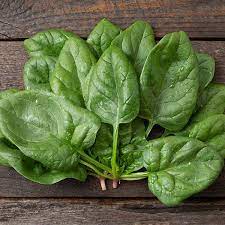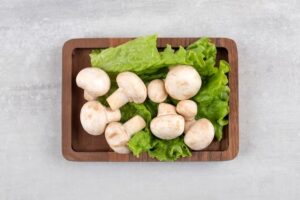Vegetables can be a fantastic source of protein, which is a vital component of life.
Protein’s current dietary value (DV), which is 50 grammes per day, is a goal for the majority of people. Lima beans, bean sprouts, green peas, spinach, sweet corn, asparagus, artichokes, brussels sprouts, mushrooms and broccoli are some examples of vegetables high in protein.
Describe protein.
From a dietary perspective, protein is a macronutrient that is crucial for gaining muscle mass. However, proteins are also the building blocks of life and are found in almost all human tissues and parts, including muscle, bone, skin, and hair. Nine of the 20 amino acids that make up protein are essential since the body cannot produce them on its own.
See the sections on the highest-protein grains, high-protein nuts, and beans and legumes for further vegetarian and vegan protein sources.
To provide a point of comparison, one cup of diced or chopped chicken breast contains 43 grammes of protein. (Just remember this as you go down the list.) The veggies that come after are higher in protein than other vegetables, but not more than other animal-based sources.
Tofu, plant-based “meats,” and seiten are all processed plant foods that can contain additional protein, but those foods aren’t included in this list. It’s about vegetables that are picked directly from the ground or a bush.
And second, beans are categorised as a vegetable in order to provide you with a variety of plant-based options on this list. This is partly due to the fact that legumes typically contain more protein than, say, leafy greens. By all means, argue this as a sticking point among biologists, but don’t you have more urgent matters relating to biology to deal with?
The Protein Requirement
Amino acids are the basic building elements of proteins. Throughout our lives, amino acids are crucial for cell development and growth. Not only are our major organs made primarily of proteins, but also our skin, hair, and many other significant body parts for high protein vegetables. Less protein intake could cause us to lose muscle mass and strength and make us weaker. A high protein diet frequently aids in a quicker recovery for people who are recovering from a medical condition.
Based on weight, the following chart provides an approximate breakdown of daily protein requirements.
| Weight | Minimum Daily Required Protein | Active Lifestyle Protein Requirement (sportspersons, weight training) |
| 45 kg to 50 kg | 64g to 70g | 77g to 85 g |
| 54 kg to 59 kg | 76g to 83g | 93g to 100g |
| 63 kg to 68 kg | 89g to 95g | 108g to 116g |
| 72 kg to 77 kg | 102g to 108g | 124g to 131g |
| 81 kg to 86 kg | 115g to 121g | 139g to 147g |
| 91 kg to 95 kg | 127g to 134g | 155g to 162g |
| 100 kg to 104 kg | 140g to 146g | 170g to 178g |
Edamame

In a pod, they are soy beans. Additionally, each cup contains roughly 11 grammes of protein.
Lima beans

Yes, yet another legume. Use them in tacos, chilli, or any other dish as you would any other ingredient.
Sea Beans

These broad, white beans include eight grammes of protein per cup, or half a cup. They are a good source of fibre as are all beans.
Peas

Peas, indeed! Five grammes of protein are contained in around 3/4 cup of these small green creatures.
Boiling Potatoes

Baked potatoes, mmmm. Seven grammes of protein are included in one big potato. also filling.
Spinach

One gramme of protein can be found in each cup of fresh spinach that you eat.
Toggle Mushrooms

These contain three grammes of protein per cup and are also known as white mushrooms. Mushrooms are technically a fungal and not a vegetable, but whatever.
Spinach Greens

Try these fibrous greens, which have the sturdy texture of kale but a mellower flavour, if you’re sick of spinach. Turnip greens provide about five grammes of protein per cup when cooked.
Sugar Corn

Three grammes of protein and three grammes of fibre are included in one medium cob. also has a summery flavour.
Clam mushrooms

Similar to white button mushrooms, each cup of these sliced fungi has three grammes of protein. Oyster mushrooms, in contrast to white button mushrooms, have a meaty texture and a mild flavour.
Kale

The most popular superfood also provides adequate protein. or at the very least some of the nutrition. A cooked cup of kale contains roughly three grammes.
Artichokes

One cooked medium artichoke has a payload of seven grammes of fibre and three grammes of protein.
Cauliflower

Similar to its cruciferous relative broccoli, cauliflower also has a small amount of protein. More specifically, two grammes of the nutrient are present in one cup.
What nine amino acids are necessary?
Your body need essential amino acids, which it cannot produce on its own, therefore you must obtain them from the food you eat. Leucine, valine, methionine, phenylalanine, tryptophan, threonine, histidine, and lysine are a few of them.
I require how much protein each day.
The recommended dietary requirement to prevent deficiency for an average inactive adult is 0.8 grammes per kilogramme of body weight, although this will truly depend on your activity level and goals. (source) To determine the recommended protein intake, use this simple protein calculator. People typically require between 40 and 60 grammes of protein per day, however many sources advise consuming more if you want to gain muscle. One gramme of protein per pound (2.2 grammes per kilogramme) of body weight is frequently advised by personal trainers.
We require protein, but why?
There are several reasons why you need protein, but ultimately, our bodies need it to stay healthy. Protein is necessary for everyone, not only bodybuilders, in order to create muscles. Additionally, protein aids in hormone regulation, food digestion, oxygen transport through the bloodstream, and tissue repair. Getting enough protein can also make you feel satisfied for longer.
What vegetables are high in protein?
Vegetables high in protein add a significant quantity of protein to your diet. Along with more common veggies including lima beans, green peas, spinach, sweet corn, artichokes, Brussels sprouts, sweet potatoes, asparagus, broccoli, kale, mushrooms and avocado, this also includes legumes (a group of plants).
Boost Your Plant Protein Intake
High-protein fruits and vegetables are delicious, nourishing, and simple to include in your diet. When you cook your vegetables, you can consume more of them, increasing the amount of protein in each meal. Green peas and spinach are the best high-protein vegetables, whilst various tropical and dry fruits make up the majority of the protein-rich fruit sources.
Including more plant-based sources of protein offers the extra advantage of being cholesterol-free and low in saturated fat, even if you are not vegan or vegetarian. Fruits and vegetables high in protein are also excellent suppliers of many other nutrients, including fibre.



















